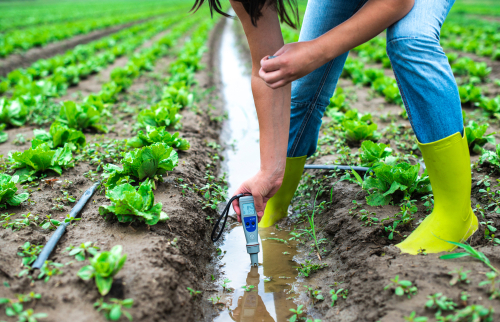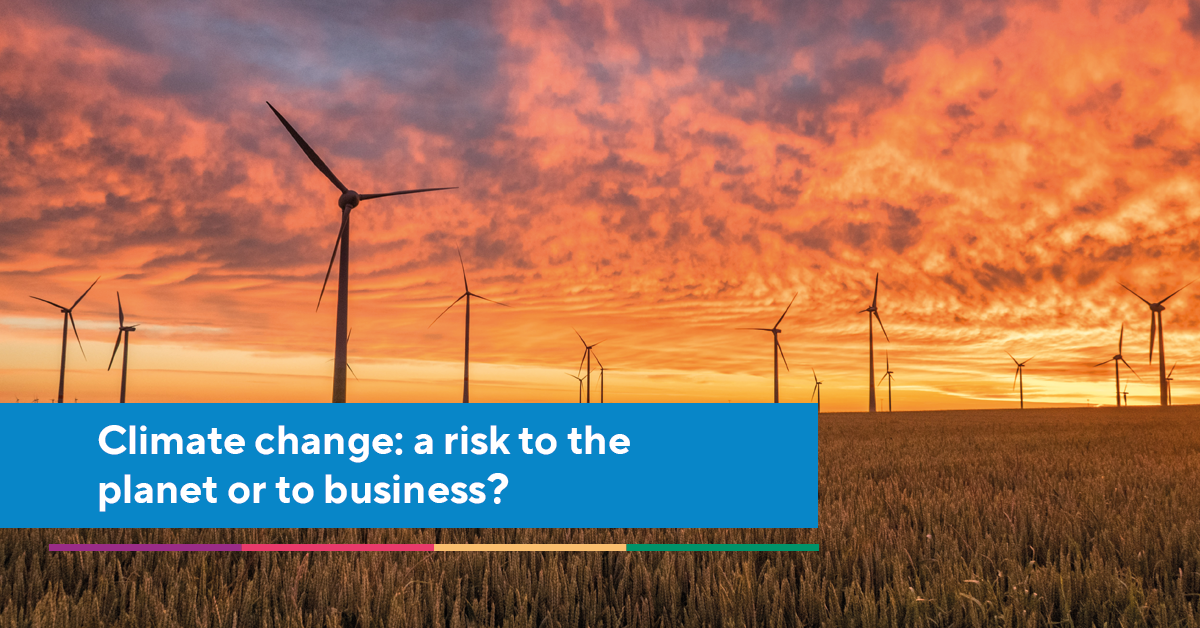Helping to fight climate change
In most of our businesses, water is instantly available at the turn of a tap. But this increasingly limited and scarce resource is under growing pressure and future supplies are at risk.
Two thirds of the world’s population have difficulty accessing water, and households compete for it with agriculture, energy, and industrial use. Agriculture alone uses 72% of the total freshwater supply and much of it is wasted through leaky irrigation. One sixth of the world population lives in a rural area with very high-water stress which creates tension when competing with for example, commodity crops.
Water is essential to business operations and agriculture in particular will see a 70% increase in water demand by 2050. Business as usual, the world will have a water shortfall of 40% by 2030. Therefore, water stewardship plays a key role in every brand’s sustainability plan.
Water stewardship means to use water fairly, not damage the environment and be economically efficient. In a business context, it requires companies to work with different groups of people and the community who depend on the same water supply. However, the nature of water supplies can lead to disputes and is a challenge that affects us all.
How managing water well contributes to global sustainability goals
Sustainable Development Goal (SDG) 6 requires access to clean water and sanitation for everyone by 2030. To compound the challenge, poor water management contributes 10% of the global greenhouse gases which cause global warming and climate change. The resulting extreme weather causes for example, droughts which impacts on the availability of crops.
Water stewardship has a ripple effect on other aspects of sustainability. When we care for water, we also restore biodiversity and improve people’s livelihoods. It is estimated that by 2030, 700 million people worldwide will have to leave their homes because they cannot access enough water. Water is crucial to stability, prosperity, and peace.
Water stewardship saves money, makes legal compliance easier and attracts investment
At every stage of the value chain - including raw material sourcing - brands are being tasked to proactively manage risk, reduce pollution and be more efficient in using water.
More than half the world’s economic output depends on nature, and biodiversity loss presents a huge risk to business and financial stability. When wastewater drains untreated into nature, it spreads chemical and microbial pollutants which cause sickness in human and animals. As well as a food safety headache, it creates availability problems when produce must be destroyed.
The cost of water supplies and treating wastewater will keep rising. As will the associated costs such as the energy used to pump and heat water. According to the CDP, the cost to the food and agriculture industry of not taking action to improve water use is approximately US$200 billion. This is twenty times more costly than acting. Already, a quarter of CDP companies have experienced “detrimental” impacts of water stress.
On a national level, 28 countries have committed to improving their water footprint and we might see more joining the Fair Water Footprint declaration and issuing legislation.
NGOs want better controls and legislation for polluters which includes agriculture. Citizens are increasingly vocal; only one in five people in England think that there are sufficient regulations to protect rivers from high water use.
Investors and financiers recognise the opportunities. The new voluntary Taskforce on Nature-related Financial Disclosure (TNFD) requires that companies have a risk management system and that they report and act on nature-related risks. The TNFD indicates whether a company is safe to invest in and while not yet mandatory, it will become an important part of the due diligence process.
People expect more from their favourite brands - doing the minimum to manage water risk is no longer good enough
Brands’ reputations can benefit when they become actively involved in their communities and help them to access adequate and clean water.
Leading brands have committed to water stewardship and are setting blueprints that others can follow - take the Water Roadmap as an example. This plan sets a 2030 water target to source 50% of the UK’s fresh food from areas with sustainable water management. While the actions are UK specific, the brands’ suppliers around the world will be tasked with proactively managing their water risks.
Food, agriculture, and textiles are global priority sectors for water stewardship action and international brands are showing their leadership with formal water standards.
Making it tangible for consumers, the Future 50 Foods initiative has identified fifty ingredients that have a low environmental impact including water use.
Taking the 5 steps towards good water stewardship
Tools already exist to help set up your water programme. There’s no need to start from scratch, so be inspired and see what’s possible in your route to becoming a good water steward!
In essence, you must check your exposure to water risk, then tackle your and your area’s shared risks. A useful blueprint is WRAP’s roadmap which is based on WWF’s Water Stewardship ladder:
1. Create water awareness
Ask your senior leadership for their commitment and develop a water stewardship policy. Consider collaborating within your sector to make the start tangible for example, an agri-food partnership. Learn more with an online water impact course.
2. Understand your impact
Understand your own and your suppliers’ impacts within your operations. Make a list of known sourcing locations and understand where the biggest risks lie. Once you understand your water impact, it will become clearer how this is connected to and impacts on other areas for example, water that’s embedded in food waste and the impact of plastic waste on water.
3. Be active across your value chain
It is imperative to monitor your own water use and in your value chain and set targets to improve efficiency and wastewater quality. Integrate water requirements into existing management systems; include example policies, guidelines, and training, and be sure to onboard colleagues in the relevant areas.
For greater impact, work with your suppliers to improve their water stewardship. This can be achieved by first collecting data on where ingredients are sourced and grown and establishing a benchmark. Also, check the sourcing area risks and what could be done to mitigate those risks. Agreeing specific and measurable targets with suppliers to improve water use and wastage will help you to track progress. This way, you can maintain accountability and have a more thorough understanding of the way water runs through your value chain.
Example areas of focus initially could be unseasonal fruits and vegetables, textile mills, or animals fed on soy or palm.
4. Take collective action beyond your business
Engage with organisations beyond your own business operations. For example, you could support a project in your industry or location and work with your communities, public sector, and NGOs on relevant water improvement projects. This can broaden your perspective on water consumption and be in a better position to work collectively with others to make a positive impact.
5. Use your influence to advocate for change
Help to change how water is governed by engaging with for example, your local government representative to support good water stewardship. Remember to communicate your good work openly and honestly, making sure to avoid any greenwash.
Looking beyond and around your business
Using water does not happen in a vacuum. It is important to look beyond your business operations and collaborate with a range of stakeholders to make sure everyone uses their fair share and does not pollute. By embracing water stewardship, you can influence how this turns out.




